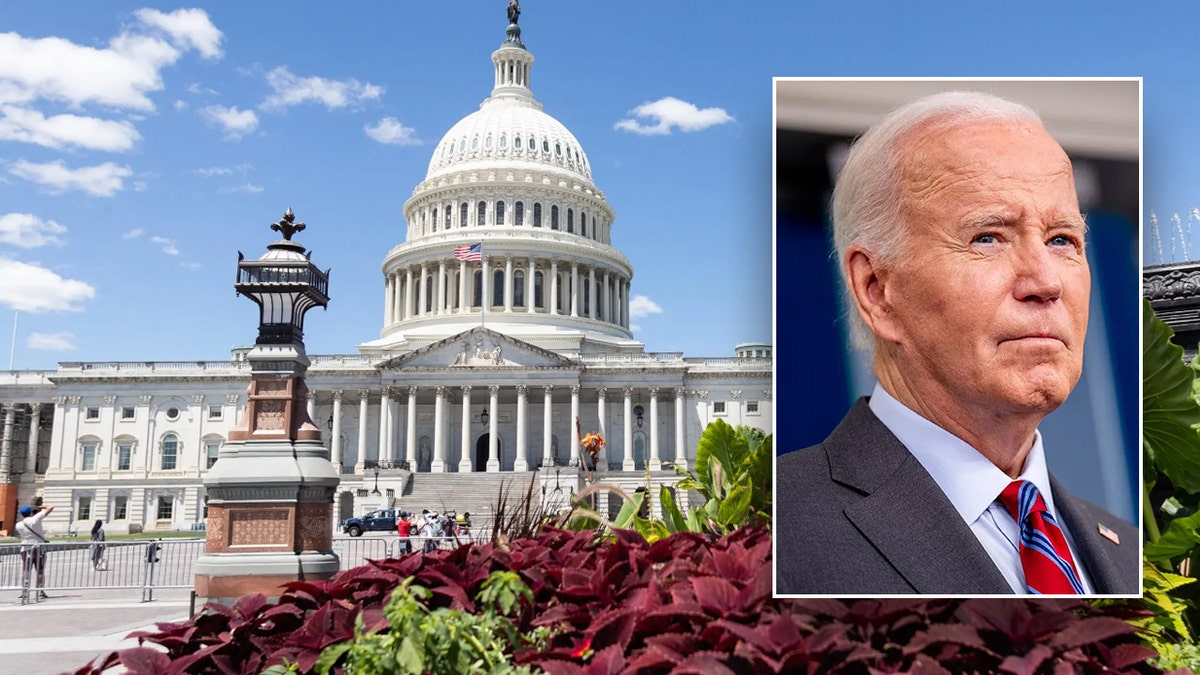We support our Publishers and Content Creators. You can view this story on their website by CLICKING HERE.
The race for control of the House is tight. The classic political jumpball. It’s hard to judge which way the House will tilt.
Republicans are heavily favored to win the Senate. But nearly every competitive Senate contest is razor-thin. Pennsylvania. Ohio. Michigan. Wisconsin. Texas is suddenly in play. Some observers would never rule out Florida. Montana appears to be slipping away from Democrats. Democrats seem in good shape in Arizona. But what happens if former President Trump wins Arizona? Republicans might seize the Senate majority with a robust 53 or 54 seats – even if all of these races are decided by just a percentage point or two.
But, we could be talking about a very different scenario for control of the House and Senate had President Biden not withdrawn from his reelection bid in mid-July.
REPORTER’S NOTEBOOK: THE HARD STUFF IS YET TO COME
On July 21, the President said he would stand down because it was “in the best interest of my party and the country.”
House and Senate Democrats breathed a collective sigh of relief.
Although many wouldn’t publicly admit it – even now – they feared that Mr. Biden had lost more than a step. He appeared tired. Utterly incoherent at times during the late June debate with former President Trump. Few were excited. They fretted that another Biden candidacy would drain all enthusiasm from the Democratic side. Former President Trump would bludgeon Mr. Biden in the race for the White House. But what truly petrified them was the impact of President Biden standing for re-election on down ballot races.

President Joe Biden is pictured in front of the U.S. Capitol. (Getty Images)
Competitive Senate seats in Pennsylvania and Ohio? Probably down the drain.
Former House Speaker Kevin McCarthy, R-Calif., prognosticated that the GOP would pick up several dozen seats in 2022. McCarthy may have been off by two years. Mr. Biden at the top of the ticket likely would have triggered a blood-letting in House contests.
Now, the House is anybody’s ballgame.
Biden campaign officials met with House Democrats at the Democratic National Committee on a sizzling morning in mid-July. Some senior House Democrats like Rep. Jim Clyburn, D-S.C., declared he was “ridin’ with Biden” as he entered the forum. But the ground was already shifting.
WHO’S IN CHARGE: THE MUDDY HISTORY OF THE 50-50 SENATE
The president stubbornly stayed in the race. But former House Speaker Nancy Pelosi, D-Calif., is always mindful of the caucus she used to lead. Pelosi understood the political catastrophe which probably awaited Democrats if the President didn’t step aside. The San Francisco Democrat couldn’t publicly call on Mr. Biden to drop out. Pelosi would be more artful than that. She would quietly urge concerned Democrats to speak out. Without directly saying anything, a groundswell of Congressional Democrats began to demand the President bow out.
A group of Biden advisers huddled with moribund Senate Democrats at the Democratic Senatorial Campaign Committee (DSCC) on a sweltering hot afternoon in mid-July. Almost every Senate Democrat who attended tried to avoid the press. In fact, many had drivers take them the several hundred yards from the Senate wing of the Capitol to the DSCC across the street. All to duck the press corps. Their silence spoke volumes about President Biden remaining in the race.
Senate Majority Leader Chuck Schumer, D-N.Y., even visited with President Biden in Delaware, just hours before the assassination attempt of former President Trump in Pennsylvania. News of Schumer’s audience with the president disappeared into the milieu of news coverage of the disaster in Butler, Penn. But Schumer feared a GOP blowout if Mr. Biden stuck around.

Senate Majority Leader Chuck Schumer (D-NY) departs a news conference with House Minority Leader Hakeem Jeffries (D-NY) at the Democratic Senatorial Campaign Committee on Capitol Hill on July 23, 2024, in Washington, DC. (Kent Nishimura/Getty Images)
The deft touch of the former Speaker was classic Pelosi. A read of the climate. No fingerprints. A wink and a nod. A green light to others to do something. Someone close to Pelosi once described to me the former Speaker’s subtlety: “You will be bleeding out and never even realize you’ve been cut.”
When Pelosi served as Speaker, allies and foes alike always wondered in awe how she got the votes. Helping orchestrate the exit of President Biden from the presidential sweepstakes was no different. Just switch the improbable into the inevitable.
A longtime confidante of Pelosi confided to me years ago that Pelosi knew how to gingerly prod House Democrats to move constituents in their districts. The constituents would then support the given issue – giving cover to Members to vote yes and not face blowback. The base now supported the issue. But not without some cunning engineering from Pelosi.
AFGHAN CHARGED WITH ELECTION DAY TERROR PLOT RAISES QUESTIONS, FEARS FROM LAWMAKERS: ‘THIS IS REAL’
That crafty tactic was also at play in convincing Mr. Biden to withdraw. After a few weeks of massaging this behind the scenes, the President understood he had no alternative but to quit. Otherwise, he likely would likely lose. Congressional Democrats would be resigned to their fate.
Vice President Harris may win. But Democrats never had a primary season to settle on their nominee. Sure. Harris likely would have been favored initially in a conventional primary process. That’s simply because she ran for president before and has served nearly four years as Vice President. But the quick pivot to Harris was in the interest of efficiency. After President Biden stepped aside, Democrats had an automatic nominee-in-waiting who was credible, qualified and whose resume resonated with the party. So, switching mid-stream to Harris was about as seamless a transition as possible.

Rep. Nancy Pelosi, D-Calif., speaks during the Democratic National Convention Wednesday, Aug. 21, 2024, in Chicago. (AP Photo/J. Scott Applewhite)
But, just as importantly, handing over the keys to Harris immediately infused congressional Democrats and the base with much-needed energy. The change buoyed Democrats in ways which were impossible under President Biden. Suddenly, congressional Democrats were back in the game.
Republicans have a strong chance of winning the Senate on Tuesday night. But had Mr. Biden remained at the top of the ticket, Democrats faced a tidal wave. Sen. Jon Tester, D-Mont., appears to be on the ropes. There are tight races involving Sens. Tammy Baldwin, D-Wisc., Sherrod Brown, D-Ohio and Bob Casey, D-Penn. Rep. Elissa Slotkin, D-Mich., is in a dogfight in Michigan with former Rep. Mike Rogers, R-Mich., for the seat of retiring Sen. Debbie Stabenow, D-Mich. Even Rep. Colin Allred, D-Tex., has a puncher’s chance in his Senate race with Sen. Ted Cruz, R-Tex. It’s conceivable that Democrats may have lost most or all of those races had President Biden remained on the ballot. But because of the president’s decision, Democrats are now competitive in all of those and may win a few – even if they lose control of the Senate.
CLICK HERE TO GET THE FOX NEWS APP
The same is true in the House. It’s nip-and-tuck. Yes. Republicans might hold their narrow majority – or even gain seats in a best-case scenario. But Democrats are well-positioned in every battleground district to potentially gain ground. That wouldn’t be the case had the Ppresident stuck around.
So this is the fundamental lesson of the seismic decision by President Biden in July to quit: it may have bolstered the chances of Democrats holding the White House. But the real dividend of the president’s decision might be realized on Capitol Hill. Not by holding the Senate and winning the House. But by avoiding an ugly blowout.

 Conservative
Conservative  Search
Search Trending
Trending Current News
Current News 





